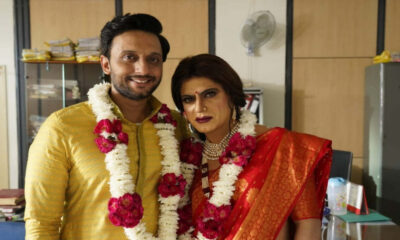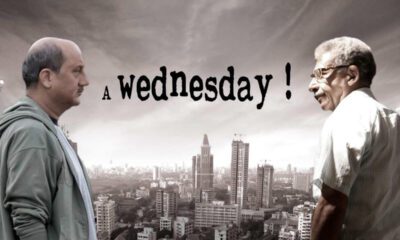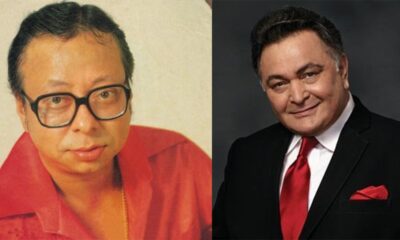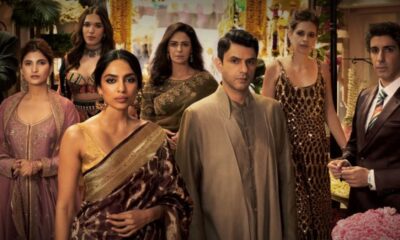Unknown Facts
Binge Watching: Lajja( 2001) you should revisit!
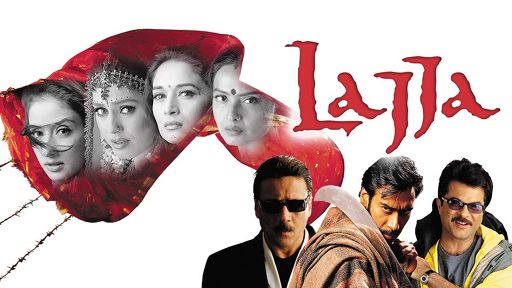
Subhash K Jha’s Lockdown Blueschasers Continued
Lajja( 2001): What happened to Raj Kumar Santoshi? The director who made bloody good(the stress being on both the blood and the goodness) action thrillers like Ghayal and Ghatak has vanished without a trace! With so many stars crammed into the stunning underrated Lajja you’d think Raj Kumar Santoshi would be so busy justifying their presence, he would forget to tell his story. For the first time in a long time, a mainstream Hindi film brings us the stars as characters rather than props to seduce the boxoffice.
Lajja hits us hard in the solar plexus . It’s what one would comfortably—or rather, uncomfortably—call a ladies’ picture. Screenwriter-producer-director Raj Kumar Santoshi addresses his creative energies to the burning issue of women’s oppression without becoming oppressively didactic.
True, there are selfindulgently didactic pockets in the taut-and-clenched storytelling , for instance Manisha’s closing harangue against a society that feels no shame or dichotomy in worshipping Durga and Saraswati and kicking around their wives and daughters-in-law, and the parallels from the Ramayan get seriously distracting when Madhuri Dixit as Sita gets on stage with ‘Ram’ (Samir Soni) to question the rules of a patriarchal society.
But Santoshi’s heart is in the right place. When it comes to women’s issues it always has been. Remember Damini? Finger on the narrative ‘s trigger he fires stinging salvos at male bestiality in a series of brilliantly written episodes. As in Shekhar Kapur’s classic on gender discrimination Bandit Queen , the female protagonists are raped on various levels, either physical, emotional or both.
Santoshi creates a dark and foreboding atmosphere around his four female protagonists without resorting to overt aggressive and suggestive violence.
The unconventionally structured plot is episodic and picaresque. Manisha Koirala is Vaidehi a conservative idealistic housewife whose NRI husband Raghu(Jackie Shroff) pursues her all the way from the US to the backwaters of India to get his hands on the child in Vaidehi’s womb. As the hapless wife journeys from patriarchal dependence to a state of emotional independence she encounters women and yes, two men, who provide her with sustenance and strength.
Maithili(Mahima Chowdhary) is the bride-to-be whose poor harassed and nervous father(Anjan Shrivastava) is harassed with dowry-related demands until she breaks free of her ghoonghat and tells her prospective groom and his greedy parents to get lost.
Santoshi’s mastery over the medium tumbles out in this episode. The manner in which he blends satirical and sombre comments on the plight of a marriageable girl’s parents, concurrently and simultaneously, is a stinging slap delivered with pacifying tact.
In the second episode Vaidehi meets the unforgettable Janki(played with memorable insouciance by Madhuri Dixit). A freespirited creature pregnant with her lover’s child and fobbing off unwanted male attention , Janki draws Vaidehi out of her shell, challenging her to answer the call of nature in a public place like men do. Janki is almost crushed under the boots of societal hypocrisy for her freespirited defiance of gender codes. Anyone who thinks Madhuri’s days are over should watch her electrifying facial expressions and her mercurial movements in the song Badi mushqil baba badi mushqil.
The third and final stage of Vaidehi’s journey takes her to a memorable Dalit woman Ram Dulari (Rekha). For the way Santoshi has recreated the real-life character of the socially progressive midwife and the rugged emotional quality that Rekha brings to the character, this is the most vividly conceived and executed lap of Santoshi’s lingering journey into a woman’s heart and womb .
Inter-linked by Vaidehi’s voyage into the unknown, the characters of Lajja are so virile and alive, and played with such splendid naturalness, you want to stand up and applaud the actors for becoming one with Santoshi’s emotional and epic vision. Cinematographer Madhu Ambat captures the women in a state of anguished radiance, exuding a bleeding brilliancy in their representational and yet intuitively individualistic characters.
Though every member of the cast from Jackie Shroff to Jaya Bhattacharya(as Tinu Anand’s painfully young and unhappy ‘bitter’-half) performs outstandingly, Madhuri Dixit and Rekha emerge specially triumphant.
Though the film is for and about women, the male protagonists , the endearing con-man Raja (Anil Kapoor, earnest hamming away) and the benevolent bandit Bulwa (Ajay Devgan) , are anything but shadowy .
Structured at the most obvious level as a thriller where an MCP husband tracks down his fleeing wife Lajja makes a hardhitting and frequently unforgettable statement on a woman’s rights over her body and mind.
Angry Indian Goddesses(2015): For all the perverts out there who think it’s their birth-right to peer up women’s skirts, here’s a film that peers right into women’s souls…seven of them, all so grandly scripted they seem to have walked into the film from our lives.
Every one of the seven female protagonists played , let me tell you, by actresses who were born to be their characters, is so sharply written,I came away thinking of them as people whose lives I’d like to know more about.(Ah, us prying Indians, whether it’s skirts or lives, we just love to intrude). Sadly by the time Pan Nalin’s exceedingly persuasive film ended one of the ladies was no longer with us.Such is life.
The temptation to share details from the dexterous script is immense. This is the kind of cinema where scenes, situations, dialogues and moments would be discussed for years to come. But let’s not jump the gun.Shall we meet the protagonists, then? There is Frieda …no , not Pinto …God forbid! Sara-Jane Dias who plays Frieda is a far better actress than Ms Pinto.And speaks much better Hindi than Lisa Hayden.
I bring up Ms Dias’ qualities because her intrinsic gorgeousness is paramount the plot, as paramount as the Goan setting where these noisy unstoppable merry-making women thresh out their inner conflicts without letting the film’s resplendent surface suffer the sins of excessive conflict .
Indeed, this film magically converts cerebration into a celebration of womanhood. When the ladies sit down to talk about the discrimination and abuse they face every day the atmosphere is not submerged in and burdened by polemics. The tone even when driven by somberness is constantly light bright and endearing.
These are women who talk a relatable language, never mind the unwarranted censorial interference. They still make their point. You can’t put this irrepressible bunch of girls down .Each one of Pan Nalin’s heroines is memorable and beautiful in her own way. This big sexy rumbustious girl-bonding film does complete justice to each character.I can just see how happy every actress must have been to own the roles offered to them.
Some of these actresses are relatively unknown to the screen and yet irreplaceably in character. I’ve to mention Pavleen Gujral’s ‘Pam’ a suspiciously giggly and loud Delhi housewife desperately unhappy underneath(akin to Nandita Das in Deepa Mehta’s Fire , but not gay). Her meltdown sequence with Anushka Manchanda(playing, what else, a singer with natural ease) is worthy of being flashed during awards nomination.
Sandhya Mridul furnishes her clichéd part of the workaholic mother with a kind of edgy passion . It’s the need of the hour. The film is motivated by a surge of contagious energy that leaves the characters and the audience breathless with anxiety.
Rajshri Deshpande as the ebullient maid is a joy to behold specially when she does an item number wth Jo the Bollywood aspirant(played with tenderness and compassion by Amrit Maghera). But Rajshri is a tad too glamorous for the maid’s part.Or maybe I am stereotyping the woman in a film that does exactly the opposite?
Angry Indian Goddesses is a tale of female fraternizing done with a robust rush of humour warmth and poignancy. There are two shockers in the plot , one at mid-point and the other towards the end. The climax seems somewhat manipulative and strained . It is decidedly lacking in the natural fluency that characterizes the rest of the film.
But I am not complaining. This is a wonderful wonderful film with moments and performances that I will cherish forever. What stays long after the film is its admirable equanimity in portraying gender equations. If men ogle at women as though by birthright, here women to attain orgasmic contentment watching the shirtless boy nextdoor wash his car.
The film is shot (by cameraperson Swapnil Suhas Sonawane) in the falling but never bleak light of evening time when people and landscapes look meditative and dreamy.It’s almost as if the God of all things cinematic had conspired to make Pan Nalin’s film an all-round triumph.Take a bow, Mr Nalin. It’s a miracle that a male director understands women so deeply.

